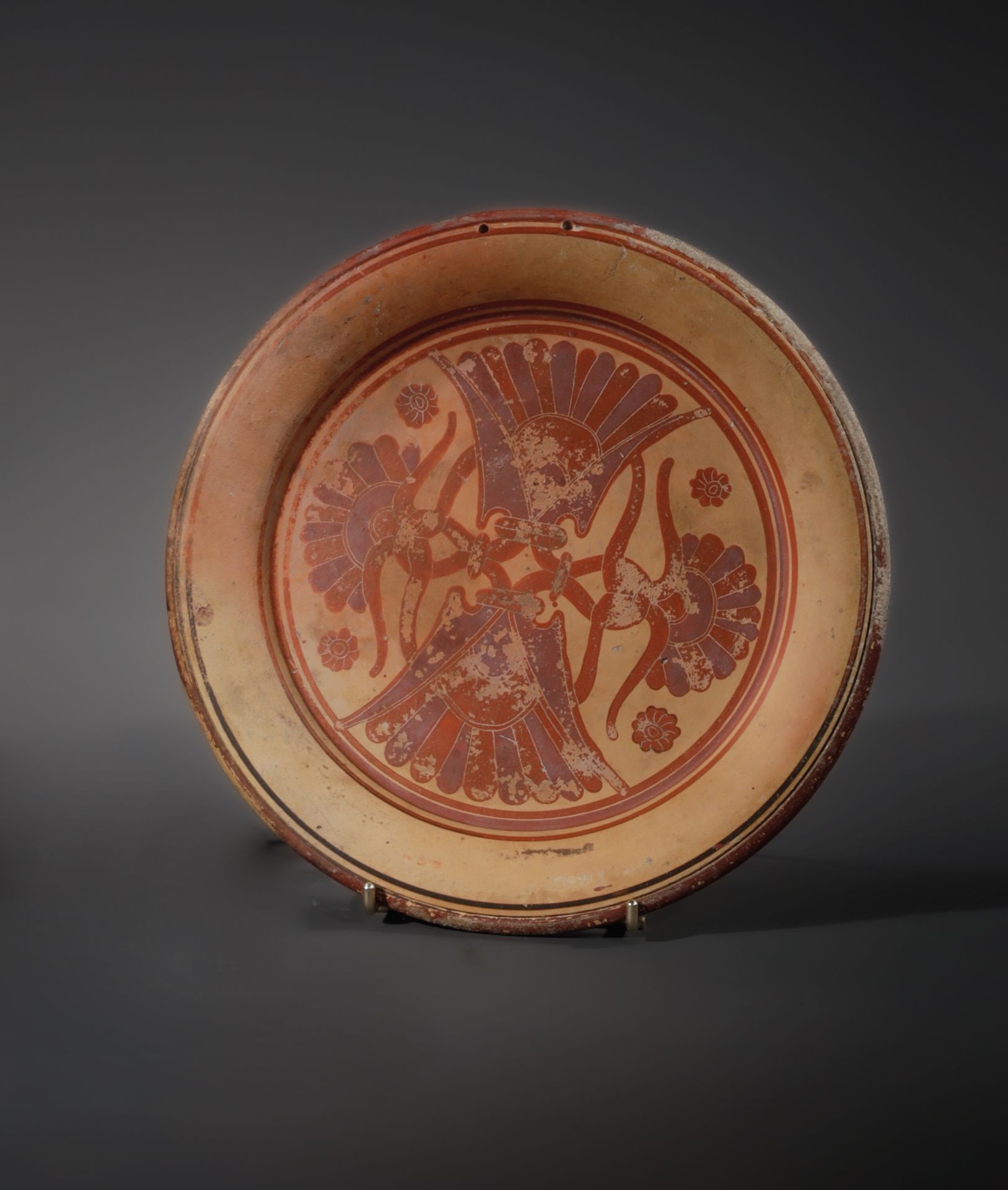Description
ASSET Central medallion motif featuring four central palmettes, two large and two small, whose stems form intertwining tendrils. The small, two-tone palmettes (brown and violet) are arranged in a semicircle with two groups of four curved lines forming the heart; above them are petals and below, more elongated, are the wide-open sepals. The reverse is decorated with three concentric reddish lines, and two other identical lines in a darker shade. Beige clay and slip. Chips around the edges, but very well preserved. Greek art, Corinth, c. 620 - 600 B.C. Attributed to the Painter of the Chimera (M.H. Delavaud). Diameter. 26 cm. COMPARATIVE BIBLIOGRAPHY. Plate listed as Corinthian, Berkeley (CA) Phoebe Apperson Hearst Museum of Anthropology: 8.104, Corpus Vasorum Antiquorum: Berkeley, University of California 1, 16-17, pl. (187) 6.4; the plate is attributed to the Chimera group, with reference to Payne H., Necrocorinthia, a study of Corinthian art in the archaic period, Clarendon Press, Oxford, 1931, p. 65, 313. PROVENANCE. . Marché de l'art, Paris, . Antoine Tarantino Collection, Paris, 2000. An export certificate for cultural property dated December 22, 2023 will be issued to the purchaser.
16
ASSET Central medallion motif featuring four central palmettes, two large and two small, whose stems form intertwining tendrils. The small, two-tone palmettes (brown and violet) are arranged in a semicircle with two groups of four curved lines forming the heart; above them are petals and below, more elongated, are the wide-open sepals. The reverse is decorated with three concentric reddish lines, and two other identical lines in a darker shade. Beige clay and slip. Chips around the edges, but very well preserved. Greek art, Corinth, c. 620 - 600 B.C. Attributed to the Painter of the Chimera (M.H. Delavaud). Diameter. 26 cm. COMPARATIVE BIBLIOGRAPHY. Plate listed as Corinthian, Berkeley (CA) Phoebe Apperson Hearst Museum of Anthropology: 8.104, Corpus Vasorum Antiquorum: Berkeley, University of California 1, 16-17, pl. (187) 6.4; the plate is attributed to the Chimera group, with reference to Payne H., Necrocorinthia, a study of Corinthian art in the archaic period, Clarendon Press, Oxford, 1931, p. 65, 313. PROVENANCE. . Marché de l'art, Paris, . Antoine Tarantino Collection, Paris, 2000. An export certificate for cultural property dated December 22, 2023 will be issued to the purchaser.
